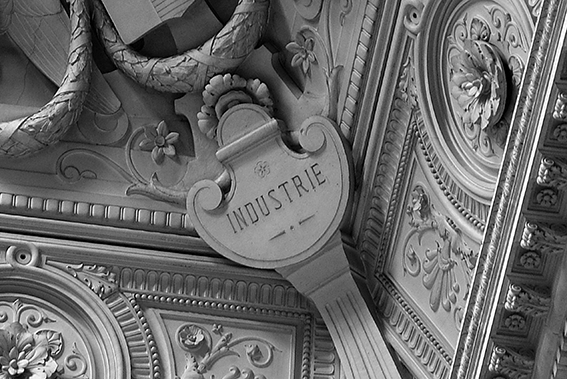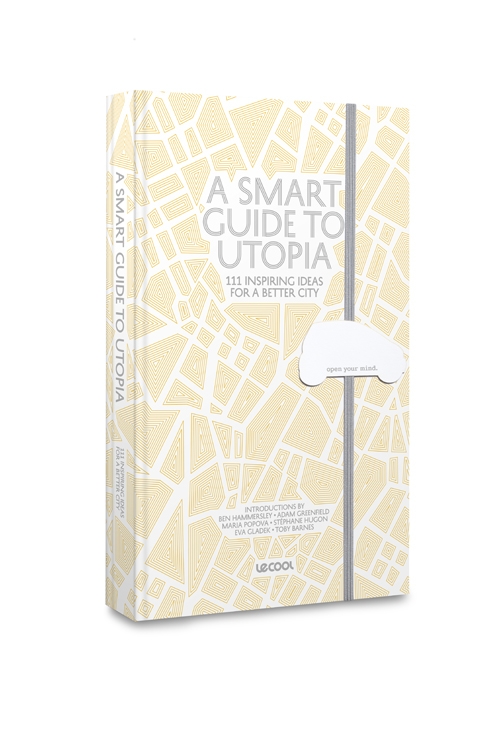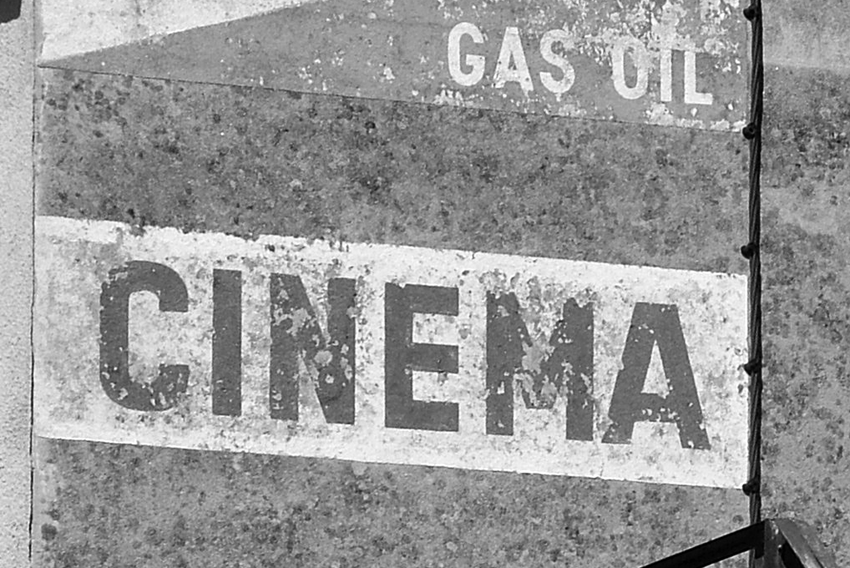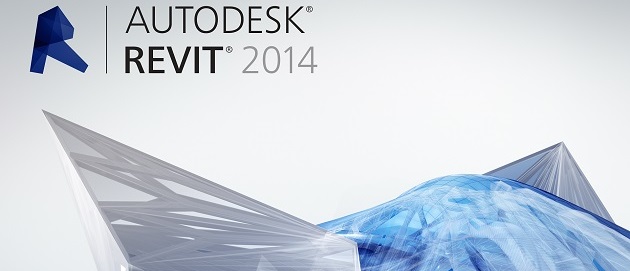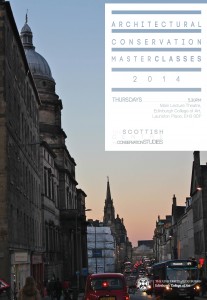Yasmin Ali
Urbanism // Design
ACT Symposium 2: Architecture and the Technological Revolution, 06.02.14
February 12th, 2014
As part of the architecture postgraduate course, Strathclyde University is running a series of symposia, and opening these up to the public as guests and architectural professionals as CPD events. The second in this series was themed around architecture and technological representation, and featured talks from two academics, Prof. Neil Spiller and Dr. Rachel Armstrong.
Neil Spiller is an academic and author based at The University of Greenwich. His work has a recurring theme of issues concerning digital media and architectural representation. He spoke of his longstanding interests in these areas, showing slides to illustrate his talk of key influences and many of his own drawings which blur the boundaries between the handmade, the mechanical and the digital. Key themes included Surrealism; metaphysics; psychogeography; modern art; modernism in general; collage; and concepts borrowed from digital media including Augmented Reality; cybernetics; cyberspace; hyperlinks; and the virtual world.
Spiller also introduced AVATAR, a group founded over 10 years ago at The Bartlett, UCL, along with its seven continuum of Space; Technology; Semiotics; Time; Psychogeography; Scope and Sensitivity. This led on to the introduction of his former colleague and the second speaker Dr. Rachel Armstong, who currently works for the unit. Armstrong has an interested background as a PhD architecture graduate via a biomedical sciences background. This gives her a unique set of skills and position of commentary on key issues, such as the quantification of sustainable outcomes.
After a brief introduction on the meaning and implications of the sustainability agenda, Armstrong set out a thesis that calls for the ontology of process as opposed to the hegemonic object-based philosophy generally pursued in architecture. In addition she cites biomimicry as a suitable tactic to emulate and introduced a series of films of experiments documenting life-like synthetic processes, such as the immiscibility of oil and water, a modern documentation of an experiment originally conducted in the late-eighteenth century. This work was reminiscent of video artist Robert Smithson’s work on entropy, which has been cited by architectural commentators as architecture’s ‘thermodynamic turn’.
Armstrong also introduced the pioneering project ‘Future Venice’, conducted in-situ with a team including Spiller, to use simulated technologies to recreate and reconstruct limestone in Venice’s waterways, to reinforce its foundation systems. She spoke of ‘programmable droplets’, which could ideally respond to changing conditions and assimilate to the marine ecology without further configuration. Citing the evolution of geotherms to angiotherms – or leafy to flowering plants – as a response to carbon fixation needs, Armstrong is hopeful for not only simulated life but evolution to future needs.
// This is the second part of a series of four symposia running weekly until and including the 27th February, except the 13th
Future Venice - here
Book Review: LeCool's A Smart Guide to Utopia
February 3rd, 2014
Subtitled as '111 Inspiring Ideas for a Better City', LeCool's A Smart Guide to Utopia is a must-have on any discerning citizen's bookshelf. Beautifully-bound and presented hardback edition with silver gilded lettering and yellow-edged paper. It is illustrated with carefully-curated accompanying photos, sketches, infographics and excerpts from architectural presentation drawings, making it a visual feast.
One of the strengths of its textual content is that it is readable to the general community, not just urban planners. It includes essays by contributors which include architects and key urban thinkers, among these city marketing guru Richard Florida and global multidisciplinary design and engineering firm ARUP. There is also input from LeCool editors from around the world including LeCool London, Lisbon, Budapest, Moscow, Vienna and Barcelona, as well as the founding agency.
Inspring and informative links to associated websites populate the footer of many pages, making this a book for the digital ages. The book is indexed, making the ideas easy to find, and the volume is a useful source book or as a primer for concept research on emerging urban innovations.
// With thanks to K-MB Berlin, Smart, and LeCool
// Retails at £20 (24euros)+ p&p, Hardback, 160 pages, available online from LeCool online bookshop
Weblinks
LeCool Bookshop - http://lecoolbook.com
LeCool website (magazines) - here
LeCool Glasgow - here
ACT Symposium 1: Film, Architecture and The City, 30.01.2014
February 1st, 2014
Weblinks
University of Strathclyde Department of Architecture - here
Chris Leslie Photographer - here
Murray Grigor IMDB - here
--
As part of the architecture postgraduate, Strathclyde University is running a series of symposia, and opening these up to the public as guests and architectural professionals as CPD events. The first of these was themed around film and architecture and urban spaces, and featured talks and footage from two Glasgow filmmakers, Chris Leslie and Murray Grigor.
The first of these, Chris Leslie, is a documentary photographer and filmmaker based in Glasgow. His work has a recurring theme of issues concerning memories, loss and community, and he specialises in multimedia documentation of Glasgow’s often controversial regeneration programmes, including those areas like Sighthill and Dalmarnock recently affected by the advent of the Commonwealth Games development programme.
He spoke of his Masters’ work documenting the plight of Dalmarnock homeowners the Jaconelli family, to be offered fair compensation for the value for their house in an area earmarked for redevelopment for the Games. This culminated in a film The Margaret Jaconelli Eviction (2011), which is part of Leslie’s Glasgow Renaissance project (2008-present) which also includes the films Oatland’s Memoir, Paddy’s Market, Sighthill, Red Road Underground and more recently, Destitutions (2012). Leslie has also lived and worked extensively in Bosnia, and launched his debut feature-length documentaryFinding Family, at the 2013 Sarajevo film festival.
After a short break for the bar and informal conversation amongst guests the programme continued with Murray Grigor, an esteemed Glasgow filmmaker who began his career with the BBC and has since had chief positions at Channel 4 and the Edinburgh International Film Festival. He is well known for his presentation in film of a poetic history of architecture and art, and has documented several eminent architects including Robert Adam, John Lautner, Sir John Soane, Frank Lloyd Wright, Carlo Scarpa, Charles Rennie Mackintosh. With a career spanning over five decades and over fifty films, and a significant contribution to architecture and the arts, Grigor holds fellow titles of both the RSA and RIBA.
This evening he presented films documenting Cardross Seminary by Gillespie, Kidd and Coia, and an hour-long documentary on the work of Alexander Graham Thomson. The film about Cardross Seminary was innovative in that it features a split-screen of two items of footage, years apart, shot at the same scenes synchronised and set to a soundtrack composed by Frank Spedding. The left frame was in colour and showed the building in use by monks and the right, in black and white showed the building in dereliction in black and white, at the same camera angles for the respective clips. The juxtaposition is powerful, particularly the lasting image of a now ghostly vacant altar without its crucifix. The film is testament to the pervasiveness of cinema as a communicative artistic medium.
Grigor also screened another of his films, a documentary about Alexander Thomson, known best for the Greek motifs throughout his work, but lesser known for his Egyptian and Semitic influences. The film went in depth to survey extant, unbuilt and remaining of Thomson’s works, and the conservation movement to save some of his buildings. There was the rare opportunity to see inside some of his buildings, as well as visualisations of buildings that have been demolished or damaged by fire. Also portrayed was a contrast with the work of Schinkel who was influenced by Thomson, and interviews with eminent historians and architects who admire Thomson’s style.
// A.C.T Symposium 1: Film, Architecture and The City, Architecture Culture Technology Unit, University of Strathclyde. This is part of a series of four symposia running weekly on Thursday evenings, 4-7pm, until and including the 27th February, except the 13th.
BIM Seminar, 22/01/2014
January 25th, 2014
Weblinks
BIM Regional Hub Scotland - here
Autodesk Revit - here
Cadassist - here
Skills Development Scotland - here
The Lighthouse - here
----
Autodesk reseller and training specialists Cadassist organised a morning breakfast briefing on BIM applications for Autodesk Revit at The Lighthouse in Glasgow last week. The morning programme included a demonstration of the main uses and applications of Revit, a presentation on potential sources of funding for training in using the software for companies in Scotland, and the policy context of shifting towards BIM for government infrastructure projects in both Scotland and the wider contextual position of the UK.
Also very relevant was a video presentation of an architectural practice who used Cadassist for their bespoke training and data and software migration to Revit-based systems, which included an upgrade of hardware, assessment of server capabilities and appropriate licensing and software solutions based on their needs, as well as a specially designed training programme which allowed the practice to switch over to the new program within one working week. They have found switching to Revit and using BIM has given them a competitive advantage against other local and regional practices and improved their PPQ scores to 99%.
The complimentary morning session was well attended by architects and building design professionals from Glasgow, as well as Edinburgh and as far afield as Inverness. It was followed by an optional hands-on demonstration session in the afternoon. Attendees were given a USB stick containing documentation referred to throughout the briefing, such as links to Cabinet reports on the targets for implementation of BIM in governmental projects. BIM is the way forward for construction projects, especially infrastructure.
It was also noted that although BIM use is on the rise in the UK, it is not new technology: Revit has been around for many years, and elsewhere in the world is more widely used and in more advanced applications than currently widespread or typical in the UK. For example, BIM has been used throughout Australia for over 15 years and it is fairly commonplace to use it to draw architectural details, whereas in the UK its application tends to be limited to 1:50 for modelling and detailing scales for isolated images from the model. It was also cited that in Singapore BIM is used for the submission of building warrant applications in which the model can be seen by local authority officials using a viewer and a decision on statutory approval can be delivered within just half an hour, given the advanced detail and ease of viewing of BIM files. One example of BIM software, Revit stands for 'revise it' and was developed as a software solution for the co-ordinated revision and updating of construction drawings and data schedules.
// Cadassist have regional offices in Glasgow, Manchester and London and regularly run short, accelerated training programmes in Autodesk software including Revit at these centres throughout the year.These courses can be in part financed by 50% through Skills Development Scotland for up to ten employees for eligible companies.
ECA Masterclass 1: Conservation, Tourism and the Invention of Heritage 16/01/2014
January 20th, 2014
Session 1: ‘Conservation, Tourism and the Invention of Heritage’
Warwick Ball (Director, Eastern Approaches)
ECA’s annual Architectural Masterclass Series began with archaeologist Warwick Ball speaking on the topic of the invention of heritage as a draw for tourism. Taking cues from Calton Hill as a local point of departure, Ball cites Calton monument as an example of how pieces of heritage are used in an almost propagandist way to convey a sense of attachment to a legacy, in this case neoclassicism. Built at the height of the Scottish Enlightenment, Edinburgh branded itself as the ‘Athens of the North’, and saw itself as an heir to classicism.
Ball continued with several further examples of reconstructions of Greek Temples, focusing on the former USSR, who sought links to roots in its ancient Greek colonies around the Black sea. Other examples of Hellenic monuments and motifs that have been repeated throughout neoclassical and Greek revivalist architecture around Europe and Russia include triumphal arches, Roman quadriga and collonades, sometimes used for Western Imperial powers to identify with a Roman history and the glory of past empires. The Russian claim to a classical legacy was strong, especially around the Black Sea, as they sought self-identity. This imperialist classical connection continued unabated throughout the Communist period, and even following the destruction of neoclassical cities during the Crimean War and World War II.
Post-communist China has also seen a revival in neoclassical buildings, which Ball attributes to an expression of Western ideals as China looks to the Occident in the Post-Mao era. Many of the more recent of these are pastiche, but more genuine, historic examples can be found in Shanghai’s French quarter. Ball also presents and interesting discourse on the reassertion of the Silk Road, and its liminality and existence as an imagined cultural landscape, rather than a physical form in the present or the past.
The talk continues with some examples of questionable reconstructed heritage sites from Turkey, Uzbekistan and Jordan. Ball empathises with the need for South Asian and Russian states in particular to assert a sense of identity, given that their lack of continuous history, a struggle for power or independence, and a sense of arbitrary border designation. Ball ends the talk with another local example: the statue at the foot of Stirling’s Wallace monument is in fact the face of Mel Gibson, driving home the point that history can be rewritten anywhere.
---
Warwick Ball is a Near Eastern archaeologist and author who spent over twenty-five years carrying out excavations, architectural studies and monumental restoration throughout the Middle East and adjacent regions, having lived, worked and traveled in most countries between the Mediterranean and China. He excavated in Iran, Libya, Ethiopia, Afghanistan (where he was Acting Director of the British Institute of Afghan Studies), Jordan, and Iraq (where he was Director of Excavations with the British School of Archaeology in Iraq). Warwick is currently director of Eastern Approaches, a special-interest travel company that offers small group tours of cultural and historical interest.
--
Further selected masterclass reviews to follow throughout February and March
Organised jointly by The Scottish Centre for Conservation Studies and the Alwaleed Centre
With Thanks to ECA
// Session 2: 23/01/2014 Chris McGregor, Historic Scotland ‘Stanley Mill – Past to the Future’
// Masterclasses run weekly until and including 20th March 2014, from 530-730pm at Edinburgh College of Art
// Free for ECA Staff & Students / £180 for all 10 / £45 non-ECA students or £20 (£5conc.) per session, including wine
Weblinks
ECA Masterclasses here
Eastern Approaches - here
Alwaleed Centre - here
Scottish Centre for Conservation Studies - here


